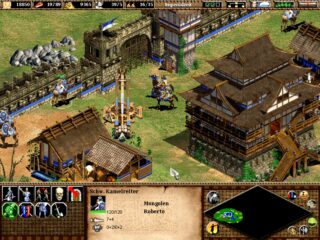Isometric graphics have long been a defining visual style in computer games, creating a unique perspective that blends 2D and 3D elements. While not a genre in itself, the isometric viewpoint has been widely used across various types of games, from action-adventures to strategy and role-playing titles. This approach enhances spatial awareness and depth while allowing for complex level design and more immersive environments.
One of the earliest examples of isometric graphics in gaming was Knight Lore (1984) by Ultimate Play the Game, which introduced the "Filmation" engine, enabling a pseudo-3D world where players navigated an intricate maze of rooms. It revolutionized adventure games and heavily influenced future titles like Head Over Heels (1987), which expanded on the concept with dual-character mechanics and puzzle-based gameplay. Around the same time, The Last Ninja (1987) on the Commodore 64 showcased isometric graphics in an action-adventure setting, combining martial arts combat with environmental exploration.
The isometric viewpoint was also embraced in strategy games, with Powermonger (1990) and Populous (1989), both developed by Bullfrog, demonstrating its effectiveness in managing large-scale battles and god-like simulations. In the action and adventure realm, D/Generation (1991) used an isometric perspective for its sci-fi puzzle-solving gameplay, while Desert Strike: Return to the Gulf in 1993 applied it to an arcade-style military shooter, offering a distinctive viewpoint for controlling attack helicopters.
Heimdall (1991) and Syndicate (1993) pushed the boundaries of isometric design even further, blending RPG elements with real-time tactics. Syndicate, in particular, was a landmark game that combined cyberpunk aesthetics with squad-based strategic combat. However, it was Diablo (1996) that truly cemented isometric graphics as an essential feature in action RPGs. Blizzard’s dark fantasy hack-and-slash game refined the perspective to create an atmospheric, immersive dungeon-crawling experience, setting a new standard for the genre and inspiring countless successors.
From its origins in early 8-bit computers to its dominance in modern gaming, the isometric perspective remains one of the most distinctive and enduring visual styles in computer game history.














